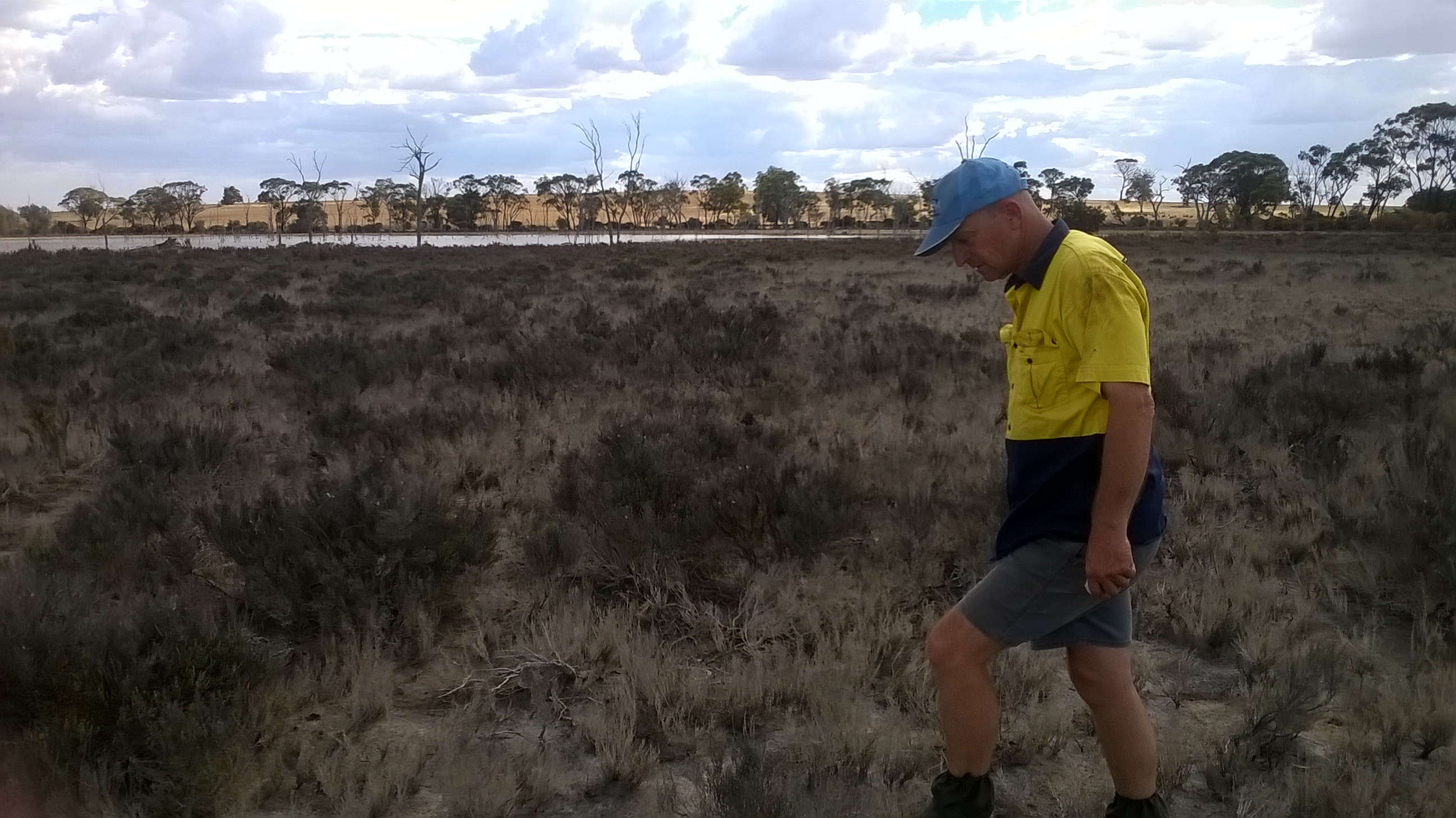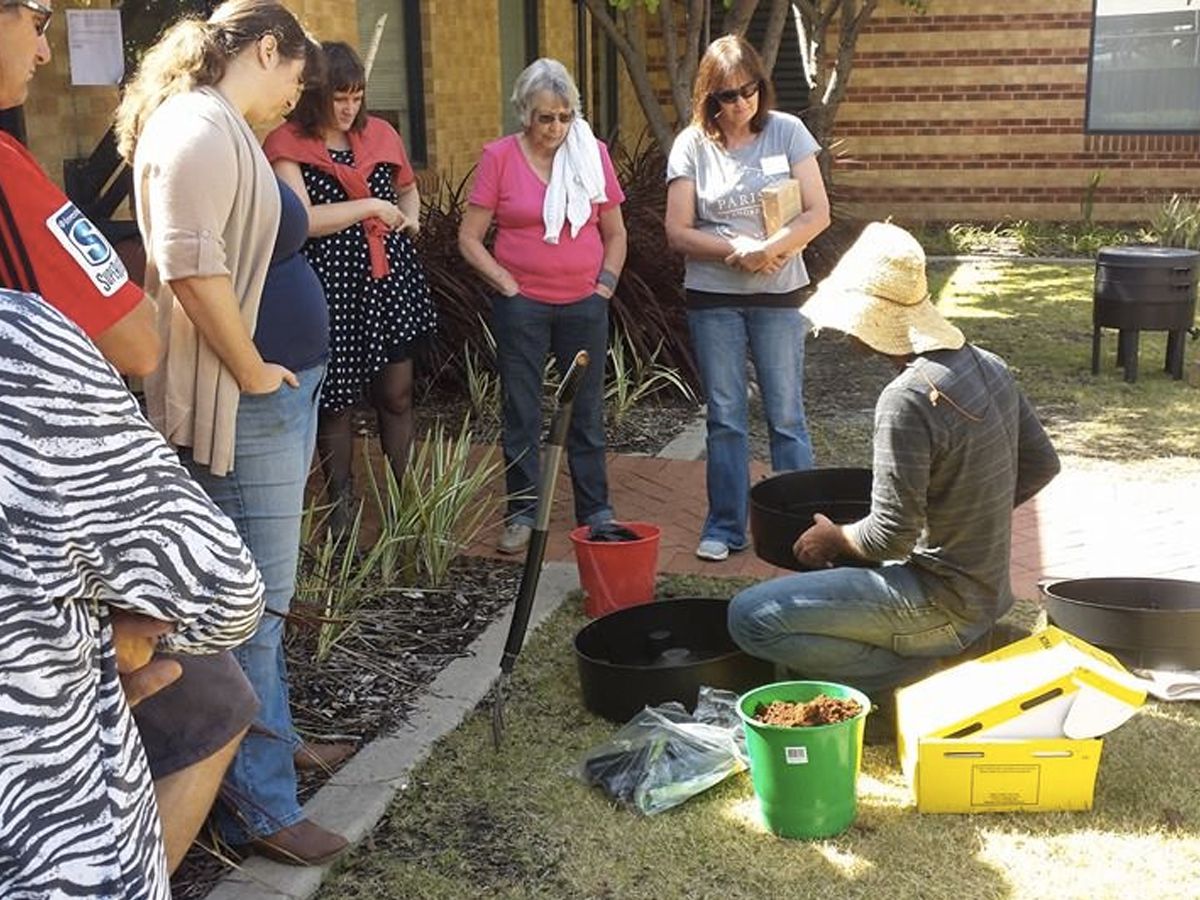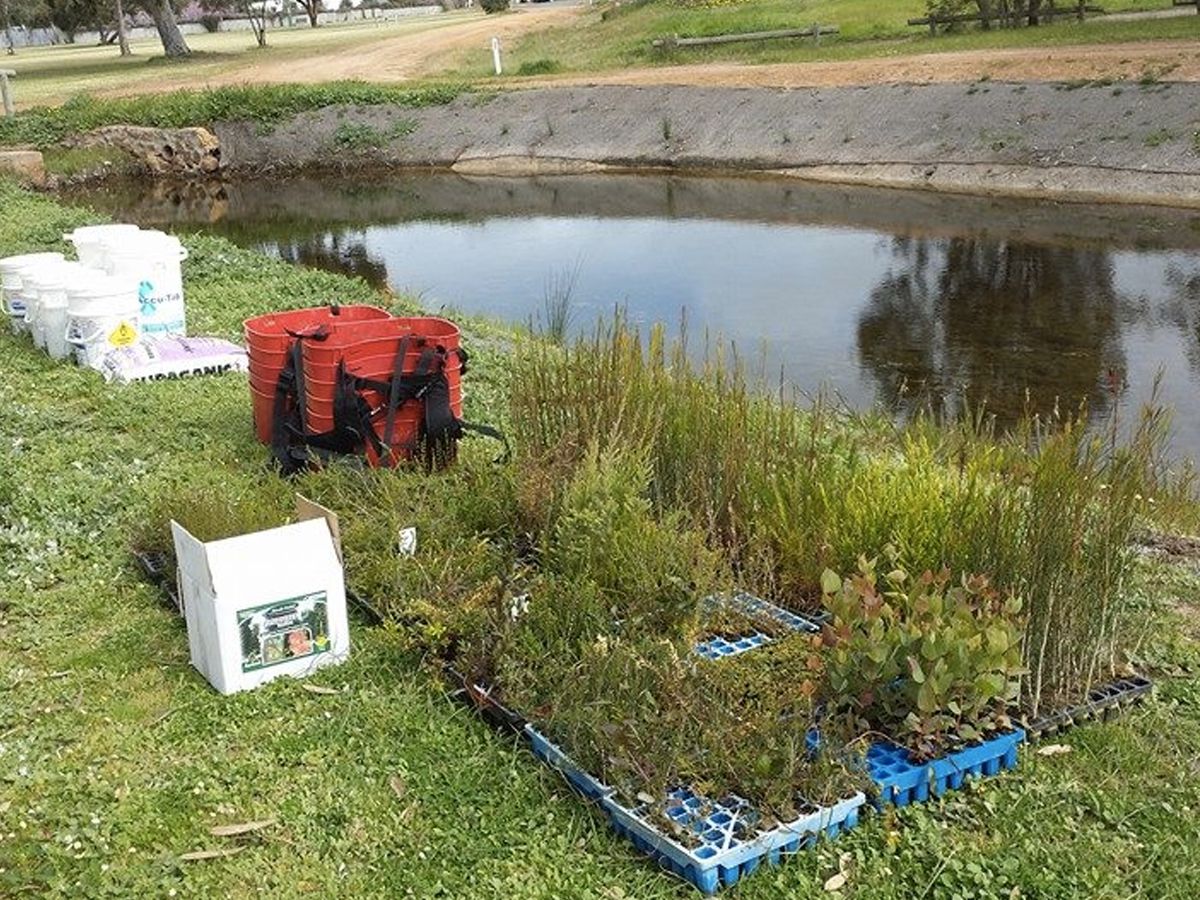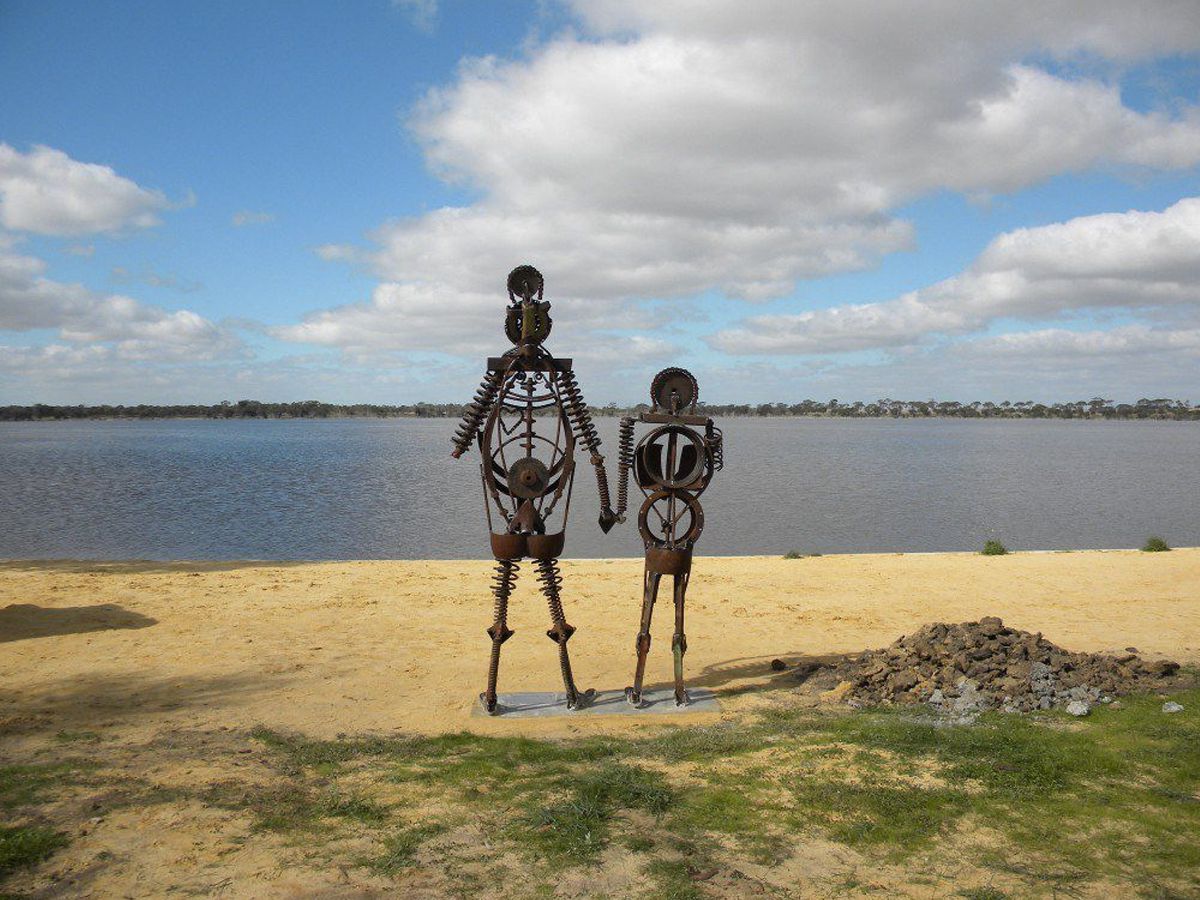Katanning Landcare Projects
As part of our four pillars of focus, we actively manage, coordinate and participate in projects for the betterment of Katanning and surrounding areas.
- creating and maintaining Healthy Farms
- improving and protecting Biodiversity and Habitat
- creating Sustainable Living programs
- improving Water Security — both on and off-farm
Each of our case study examples, highlights pressing environmental issues that need our attention. With the support of sponsorship, grants, and public donations, we are able to make a positive impact and measure the success of our communal efforts.
Keen to make a difference? Get involved! You can register as a member, sign up for a workshop or contact our team today.
Protecting the Phascogale
Get a FREE nesting box on your property
The Red-tailed Phascogale is a small tree-dwelling, native and nocturnal marsupial. Once widespread across southern Australia, it now only survives between Narrogin, Lake Grace and Kojonup, making the Shire of Katanning one of the last locations to find this beauty.
Loss of habitat and predation by cats have reduced populations, but Katanning Landcare, in partnership with the Foundation for National Parks and Wildlife, are calling for members of the community to ‘host’ a Phascogale nesting box on their property. The nests are made locally in Katanning with help from community groups, can be installed FREE OF CHARGE by Katanning Landcare professionals, and require little input from property owners, other than to sit back and watch these beautiful, yet declared ‘vulnerable’, marsupials!
The Red-tailed Phascogale is recognisable by its distinctive tail – rust coloured at the top with a black and bushy end. It is a carnivorous marsupial that lives off insects, spiders and small birds and measures only 10cm in the body and weighs just 60g (about the weight of a chicken egg). It moves at blink-and-you-miss-it speeds, leaping up to two metres in a single bound!
Their preferred habitat is dense, mature forests of Wandoo (Eucalyptus wandoo) and Sheoak (Allocasuarina huegeliana), which provide them with tree hollows, however with clearing we are seeing Phasocogales move to areas with rough, barked trees and healthy canopy cover for protection.
The nesting boxes provide an alternative to tree hollows, and will be placed on a suitable tree (by our professionals) facing in a east/south direction to provide shelter from the elements. It will be ideally installed at a height of 3m above ground level to reduce chances of predation by cats and goanna.
They’re territorial and the females will come back to the same nesting sites year after year, so its vital that we create suitable habitat for nesting.
To be part of this FREE project, contact the Katanning Landcare Office. Call today on 9821 4327 to avoid disappointment, or email hello@katanninglandcare.org.au

Bush tucker grown on saline land is starting to turn up in gourmet restaurants – and a few specialist supermarkets – right across Australia.
But supply of saline bush-tucker is currently niche, seasonal, highly variable and labour intensive. This project seeks to develop techniques to grow, harvest and sustainably supply saltbush, samphire, ice-plant and pigface year-round, in ways that can be replicated by other broadacre farmers across southern Australia. Young people will be trained in horticultural skills, and farmers will be taught how to enter the market, creating income-generating opportunities, breathing new life into salt-affected land, and putting more sustainably-grown food on the plates of Australians.

Through QFH Multiparts multi-year sponsorship, we will look at landscape changes over neighbouring farms over three years.
The three-year project will assess the impact of integrating sustainable land care principles into agricultural practices to effectively manage the whole farming landscape. We will focus on regenerating infertile land, and fixing degradation issues such as erosion.
The project kicked off with a Field Walk through the subject area to demonstrate what the project will be assessing. Throughout the three years, there will be several opportunities to revisit the area and evaluate the changes.
Katanning EcoWeek started in 2014 and was quickly adopted by our community as an important program. Every September, we run a wide variety of workshops and events to help focus people’s attention on the ways they can make a difference. From art and photography and shop front window displays, to workshops on everything from arboretums to worms, we have seen a huge response from our community for the need for these events. We’ve also been attracted visitors from further abroad, and have been struck time-and-again with the message that Katanning is “Surprisingly Sustainable”.
Katanning EcoWeek coincides with the annual Bloom Festival, a Great Southern festival focusing on the spring wildflower season. We are delighted to be a part of this much bigger event. Events have been supported by FRRR, Shire of Katanning, GSDC, SGIO, and through the support of generous individuals, who provide invaluable time, money and resources to the running of these community events.

One of the big answers to so many of the environmental problems we face is ‘plant a tree’. And if you can plant more than one, all the better. Every year, depending on the funding we receive, we plant as many seedlings as possible.
We also provide subsidies to farmers and other landholders to fence off their remnant native bush to prevent stock access. This encourages undergrowth and supports habitat creation for native species, many of which rely on ground cover for feed and protection.
Trees have multiple benefits, including reducing water logging, preventing wind and water erosion, reducing soil compaction, bringing back valuable microbes, providing stock shelter and wind breaks, providing habitat for native species, carbon sequestration, air quality, and generally improving the look and feel of our landscapes. We believe all of these benefits, and more, make it essential to ensure that as many trees are planted and protected as possible.
To make your impact, why not donate to Katanning Landcare and help us plant more trees? Please click here to Donate Today!

The Katanning and Surrounds annual Fox Shoot is an important community biosecurity program that reminds farmers and community members to remain vigilant against feral predators.
Our Fox Shoot and Tally Breakfast are important events in the farming calendar. Each year, in February or March, a community fox and rabbit shoot is organised to highlight the importance of feral predator control in our agricultural region.
The annual event brings together farmers and has a number of prizes provided by local businesses. This local event is part of a state-wide program aimed at reducing the damage done by foxes, cats and rabbits—and other feral animals in Australia.
See Red Card for Rabbits and Foxes website or Facebook page for more information.
Here’s a quick wrap up of the 2018 Fox Shoot and Tally Breakfast.

Bridal Creeper is one of the most resilient and hard to kill weeds of Western Australia—and it’s taking over bushland, roadsides, creeklines, and reserves nationwide. It is a Weed of National Significance (WoNS) and has been the target weed for Katanning and several surrounding shires for the last seven years.
Working together with the Landcare groups, Shires, Main Roads, spray contractors, and the State NRM Office, this weed has been sprayed on all roadside in Katanning, Woodanilling, Wagin, Dumbleyung and West Arthur for seven years. Our efforts have significantly reduced its spread. Recently, the shires of Kojonup, Narrogin and Kent have also joined the fight against Bridal Creeper, with management of this weed becoming an increasing priority as it smothers native habitat throughout these shires.
The program consists of a central coordinator organising the spray contractor to ensure that all roadside infestations (or as many as is feasible) are sprayed each winter. Because of its resilient nature, it takes at least seven years to kill a single Bridal Creeper plant. We have seen in Katanning, Wagin and Woodanilling, in particular, that ongoing systematic spraying of infestations, and raising awareness and training among the shire and community has shown a marked reduction infestation density.
For a bit more information about the program and for a few hints about managing this weed or other weeds of Western Australia, please see this blog post.

Together with the Lake Ewlyamartup Working Group (LEWG), Katanning Landcare has developed and spearheaded the restoration of Lake Ewlyamartup from a hyper-saline eutrophic mess to a community loved healthy recreation environment that supports bird watchers, kayakers and waterskiers alike.
For some insight into the Lake Ewlyamartup project, please check out these blog posts:
- The Lake Ewlyamartup Story – features a YouTube video of Ella presenting the transformation of ‘our lake’
- Lake Ewlyamartup Kayak Tour
- How Can a Lake have an Inlet but No Outlet?
- A New Family Watching Over the Lake

The 10WBT program is no longer being offered, but we are really proud of the program and wanted to share how it worked. Have a look back at one of our favourite projects.
Reducing the amount of rubbish sent to landfill is about breaking old habits and forming new ones. Going “cold turkey” is hard – that’s why this program is about taking it one small step at a time instead, helping people make changes AND stick with them.
Over 10 weeks, we’ll help your residents or employees to tackle major categories of domestic waste – one at a time. We’ll support them with expert mentoring and help them to drop the size of their bin without compromising on their lifestyle. The program is online, so your participants can access it at a time and place that suits them.

